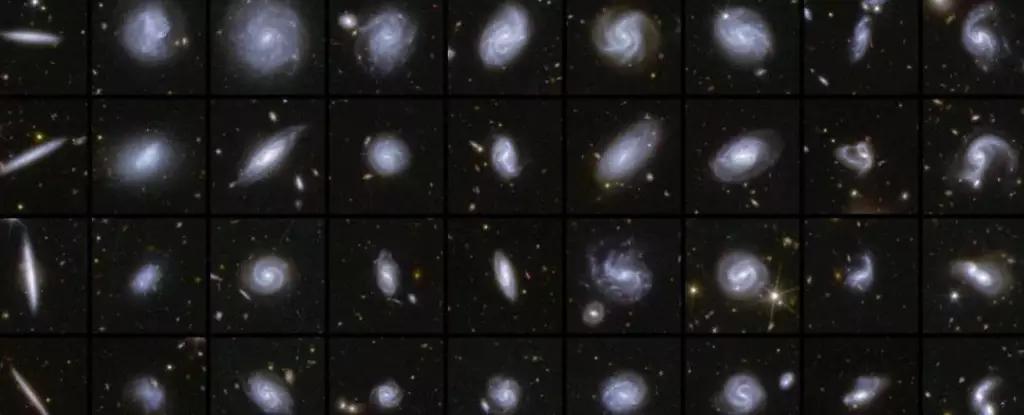In July 2023, the European Space Agency (ESA) unfurled a new chapter in the annals of astrophysics with the launch of the Euclid Space Telescope. This remarkable instrument isn’t merely a new piece of technology; it embodies humanity’s unquenchable thirst for knowledge about the cosmos. Designed to probe the expansion history of the Universe, Euclid possesses a 600 MB camera that can capture intricate details of celestial wonders such as the Perseus Cluster and the Horsehead Nebula. However, the telescope’s primary objective transcends the mere capturing of vivid images—it’s set to unlock the secrets of dark matter and dark energy, the elusive players in the drama of cosmic evolution.
Peering Into the Abyss
Euclid’s first release of images from its ambitious survey has been nothing short of spectacular. The initial scans of its Deep Fields have unveiled a staggering number of celestial bodies—26 million galaxies, with some lying over 10.5 billion light-years away. The Deep Fields are strategically selected regions in the sky that will be observed repeatedly, allowing the telescope to compile unprecedented data on the Universe’s large-scale structure. If the Hubble Space Telescope established our understanding of deep field observations, Euclid promises to take it to a new level, offering the most profound and detailed views of the cosmos yet conceived.
The implications of observing these Deep Fields extend far beyond aesthetic appreciation. These regions will serve as laboratories for astrophysicists to probe the intricacies of cosmic evolution, making it possible to chart the gravitational interactions of dark matter and the expansion dynamics caused by dark energy. As Prof. Carole Mundell, ESA’s Director of Science, aptly put it, “Euclid shows itself once again to be the ultimate discovery machine.” Her words capture the essence of what this telescope signifies: a tangible step forward in our quest to unravel the Universe’s most pressing mysteries.
A New Era of Gravitational Lensing
One of the most exciting aspects of Euclid’s initial findings is its identification of strong gravitational lenses. This phenomenon—where massive objects like galaxy clusters bend the light from more distant objects—creates a unique opportunity to study the Universe’s hidden structure. With nearly all the 500 strong gravitational lenses cataloged in the first data release being previously unknown, it becomes evident that Euclid is not just another telescope; it is a transformative tool reshaping our understanding of gravitational physics.
Harnessing cutting-edge AI technology and collaboration with citizen scientists, the telescope’s capabilities in surveying vast areas of the sky are nothing short of revolutionary. As Pierre Ferruit, the ESA’s Euclid mission manager, comments, “This data release highlights the incredible potential we have by combining the strengths of Euclid, AI, citizen science and experts into a single discovery engine.” This collaborative spirit in exploring the cosmos signifies a leap forward in scientific engagement—democratizing discovery and opening up the Universe to a broader audience.
Charting the Cosmic Web
Central to the mission of Euclid is the mapping of the cosmic web, an intricate tapestry of galaxies and dark matter filaments that shape the Universe’s structure. The telescope’s two instruments—the visible light camera (VIS) and near-infrared light camera (NISP)—work in concert to reveal not just the galaxies’ appearances but also their distances and masses. This multi-faceted approach provides crucial insights into the behaviors of these celestial bodies over cosmic time.
Clotilde Laigle, a scientist with the Euclid Consortium, emphasizes the significance of the initial data: “We are unlocking a treasure trove of information for scientists to dive into.” This release represents only a fraction—merely 0.4 percent—of the total galaxies Euclid is set to study throughout its projected mission until 2030. This ambitious scale of exploration will yield a monumental catalogue, enriching our understanding of galactic formation and evolution.
The Legacy of Euclid
Just as the ESA’s Gaia mission has redefined our understanding of the Milky Way, so too is Euclid poised to become a cornerstone of modern cosmology. Gaia set the precedent by providing an exceptional map of our galaxy, revealing nuances that have reshaped our understanding of its structure. Similarly, Euclid promises to illuminate the mysteries of dark matter, energy, and the fundamental architecture of the Universe.
In a realm where dark matter and dark energy represent two of astronomy’s most pressing enigmas, massive observational datasets like those generated by Euclid hold the key to future discoveries. The telescope not only fosters a deeper appreciation of the cosmos but also sets the stage for generations of scientific inquiry, ensuring that our quest for knowledge continues unabated. As we stand on the brink of this exciting era of cosmic exploration, the revelations that lie ahead are astoundingly promising. Euclid is not merely a telescope; it is a beacon guiding us through the profound depths of the Universe, revealing its secrets one image at a time.


Leave a Reply